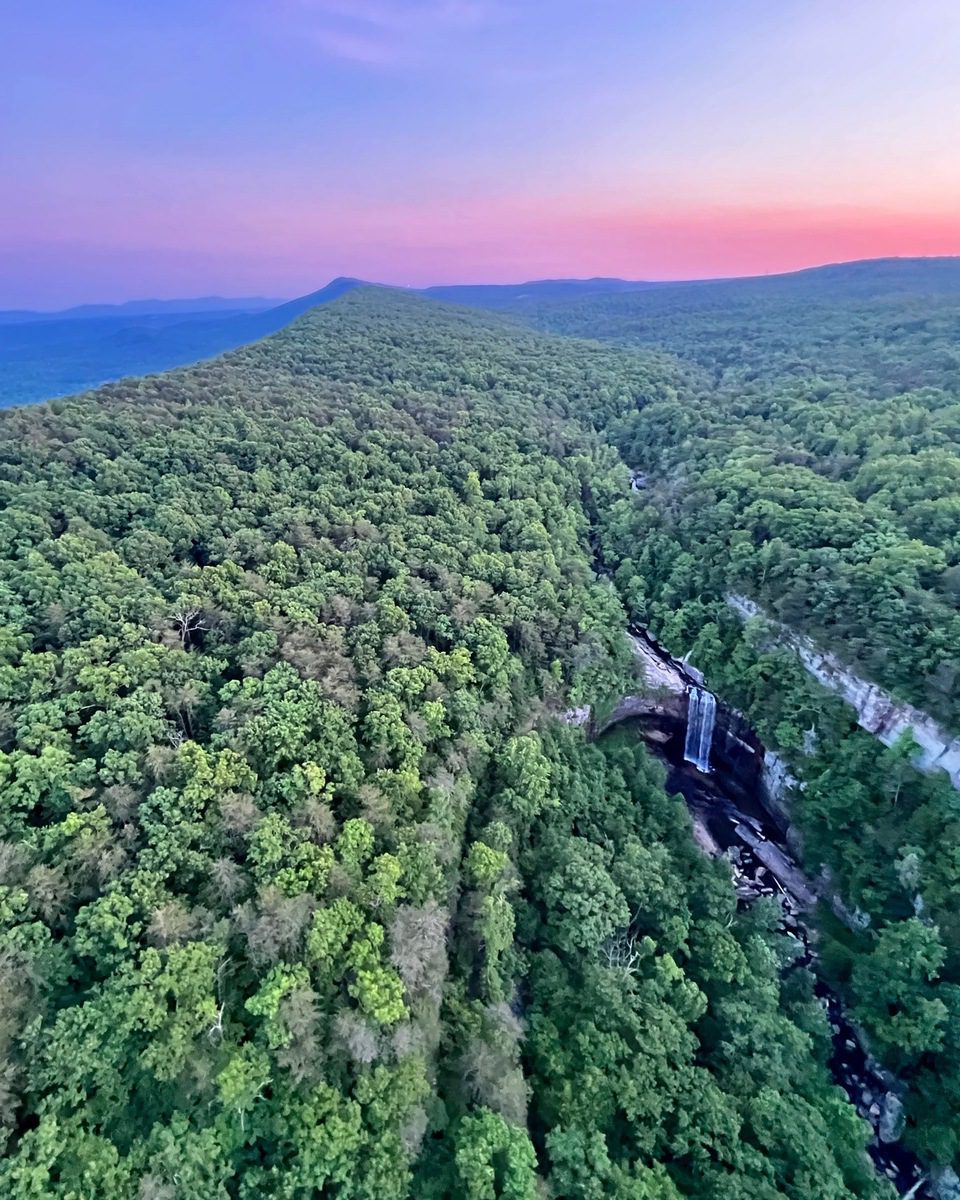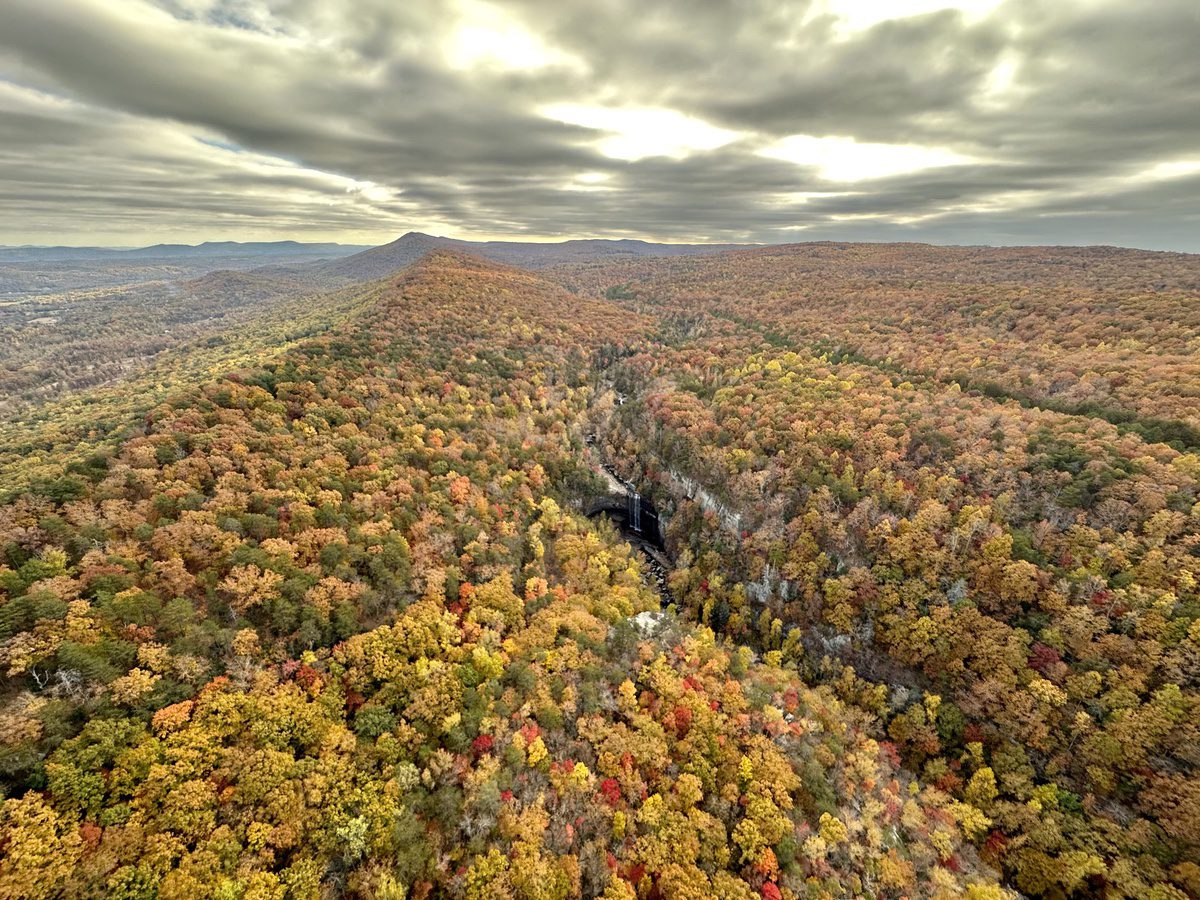Appalachian Carbon Exchange + Finite Carbon Case Study
The advancement of forest carbon markets in the United States has resulted in significant conservation efforts, with forest carbon projects protecting approximately 10 million acres since the first project was developed over 30 years ago. By extending rotations and deferring harvesting on lands that could otherwise experience reductions of their timber stocks through forest conversion or intensive harvesting, forest carbon projects promote healthier environments, cleaner air and water, and greater biodiversity. They also serve to stimulate local economies while providing communities with recreational options and natural protection from severe weather conditions, such as storm surges and flooding.
The Southeastern United States serves as a prime example of the benefits that forest carbon projects can provide to the landscape and surrounding communities. While land conservation in the region is increasingly stressed from forest fragmentation, there is also immense opportunity for a more robust future. In the Southern Appalachians, both the environment and atmospheric carbon balance stand to benefit from protecting the region’s forests and the forest carbon that comes with it.
In 2016 the Tennessee River Gorge Trust (TRGT) registered a significant portion of its land for a carbon offset project in Southern Appalachia. This project was developed by Finite Carbon for the US compliance carbon market under the California Air Resources Board (CA ARB) protocol. Through a commitment to bolster sustainable forest management, TRGT’s carbon offset project generated new and much needed revenue for TRGT to further its mission to preserve a healthy region surrounding the Gorge for generations to come, while providing the community with increased outdoor recreation and habitat for wildlife.
Building on this experience, in 2021 TRGT established a non-profit subsidiary, the Appalachian Carbon Exchange (ACE), to continue facilitating natural climate solutions and regional investment throughout Southern Appalachia.

Photo credit: Victoria Stamey
Importance of working together
ACE began their initiative by calling for, reviewing, and approving an initial cohort of institutional forest landowners to participate in an aggregated voluntary carbon project under the ACR’s Improved Forest Management (IFM) protocol to spur economic activity across the region through nature-based solutions. ACE’s project was designed with a goal of stimulating local participation in carbon markets for both landowners and buyers of carbon offsets.
The quality and integrity of its carbon projects was non-negotiable, so TRGT and ACE once again engaged Finite Carbon for project development, drawing upon its robust knowledge of industry frameworks, protocols, methodologies, and nuances across both voluntary and compliance markets. Finite’s team has an extensive track record of working with multiple carbon registries to establish best practices as the market continues to evolve. Since establishing the very first compliance project under CA ARB, Finite has also been a trusted collaborator with the ACR in the development of the IFM framework.
Garnering regional support
To meet ACE’s climate goals for the region, the initial cohort of forest owners were approved to participate, which includes TRGT (land not used for its CA ARB project), Southeastern Cave Conservancy, Inc., Lula Lake Land Trust, and the South Cumberland Region Land Trust. These organizations all employ only 1 to 5 full-time staff members who are dedicated to stewarding the lands, and depend on ephemeral funding sources. Their primary assets remain the forested land that they steward, yet the pressure of sale and/or intensive harvest of these lands for organizational stability is always present. With these plots of land historically under pressure for harvesting and other activities for revenue generation, credits generated through the land’s mission-oriented development supports project additionality and integrity.
As the ACE project is comprised of land trusts with similar commitments to improving both their own sustainable forestry practices and the surrounding local economies, the project presented Finite with a unique position, differing from its traditional work with individuals and entities owning tens of thousands of acres. It was clear that aggregating mid-size tracks, averaging roughly 2,000 acres, could activate an untapped type of market participation. Recognizing the unique goals of ACE and the potential for alignment, Finite, as project developer, leveraged its project development experience while assisting the land trusts to conserve working forests, providing programmatic services, advising on overall approach, origination, development, and project management.
Ongeleigh Underwood, ACE Executive Director, stated: “It was important to develop the [voluntary carbon] project in a manner which maximizes the quality of the credits and the impact for our partner land trusts and buyers of generated credits in our local community. This started with rigorous work on the ground with Finite’s foresters establishing an appropriate baseline in alignment with the IFM protocol to create long-term production of carbon offsets.”
We pass that rigor of development to our buyers, ensuring credits will be viable throughout the life of the project. For example, credits from our own project are solely making up the buffer pool, de-risking the process in the event of floods, fires or other natural occurrences.”

Photo credit: Rock Creek Aviation

Photo credit: Rock Creek Aviation
Local challenges addressed with local solutions
The economic, social and cultural heritage of the Southern Appalachian region is rooted in its legacy of various land uses, historically playing out through subsistence agriculture and adjacent resource extraction. The region’s unique qualities allow for the land to serve two purposes: providing dynamic conventional working forests, and a myriad of benefits of undisturbed land.
However, this has been changing over the years with an overwhelming majority of the natural land being altered. For example, while logging, mining, farming and road building have provided respective benefits, they have also caused significant changes to the landscape, and more importantly, limited the ability of intact and healthy forests to serve as a resource into the future.
To grasp the scope of these changes, ACE conducted a literature review focused on fluctuations across the region’s land use and changes over time, looking to identify potential opportunities and challenges Southern Appalachian landowners face when considering the carbon market as a viable alternative to land sale/conversion and/or materially increasing their timber harvest.

Mannington Commercial (Pictured: Proxy, PVC-free Non-vinyl Resilient Plank) has a transparent, long term emissions reduction strategy that includes interim goals, and is in the process of registering with GRI reporting standards.
ACE’s literature review concludes:
- More than 80% of land is privately owned, with both residential and commercial construction serving as a major market driver for future land decisions.
- Biomass energy production, particularly given the European Union’s bioenergy growth, represents an additional demand for Appalachia’s older bottomland hardwood forests.
- Over the past decade, Southern Appalachia has seen its population grow by more than 10 percent, outpacing national averages. To accommodate this, the region is experiencing the country’s highest rates of urban sprawl, with the outskirts of large and medium-sized cities expanding at a rate of 261% between 2006-2060.
- Regional and conventional harvest practices of private forests often have minimal oversight, often resulting in high-grading, declines in forest vigor and product quality, and forest fragmentation and breaking up the land from individual ownership into smaller parcels for resale and other commercial purposes.
Underwood also noted, “This knowledge informed our strategic decision to focus on projects which will provide meaningful investments in nature-based solutions for partners in our backyard. Likewise, we sought to intentionally work with Georgia-based Mannington Commercial as a responsible carbon offset buyer, as they mutually value working with local and regional partners to invest in the communities it serves on a daily basis.”
Mannington Commercial has a transparent, long term emissions reduction strategy that includes interim goals, and is in the process of registering with GRI reporting standards. By purchasing the carbon credits generated by the first five vintages of ACE’s Finite Carbon-developed project, Mannington has been able to offset an equivalent of 105% of the total carbon resulting from the production of all its domestically manufactured commercial products.
What’s Next
Building upon the success of its first cohort, ACE has procured a second cohort of southern Appalachian landowners comprising nearly 15,000 acres and absorbing approximately an additional 500,000 tons over the cohort’s first 10 project years.

Photo credit: Kevin Livingood
Why Improved Forest Management makes sense
Carbon projects developed by Finite under ACR’s IFM protocol prioritize the quality and integrity of the credits being developed. This approach is designed to help secure landowner commitments to carbon projects for a decades-long period to positively impact the environment. Finite develops voluntary carbon projects using the ACR IFM protocol to ensure stringent baselines that prove additionality and yield high-quality credits that exceed any greenhouse gas reductions and removals otherwise required by law or regulation.
Dylan Jenkins, Finite Carbon Vice President of Portfolio Development, emphasizes that, “Project integrity and the resulting offset quality are the shared, primary focus for ACE and Finite, and the backbone of its project development. To fit this mutual understanding, as it does with all its projects across voluntary and compliance market projects, Finite developed ACE’s project in accordance with ACR’s rigorous monitoring and verification standards to ensure that the carbon sequestration is real, additional, permanent, verifiable, and enforceable.”
With the relationship continuing into a second cohort and for the sale of reporting periods 6-10 of the initial cohort, both ACE and Finite maintain congruent goals of providing landowners with the opportunity to strike a balance between maintaining the value of the land with climate-positive land management.
Jenkins added, “What makes collaboration with an organization like ACE special is it allows both organizations to focus on the passion behind the project, while operating in a way that honors landowners’ long held connections to the forest land and the Southern Appalachian region. Beyond the carbon generation, we’re excited to work and provide additional environmental, recreational, and economic co-benefits for those who love the land and want to help conserve it for the current rural communities and future generations.”
As the world adapts to the realities of climate change, locally sourced and driven carbon projects create unique opportunities to generate positive impacts beyond economic benefits to delay harvests, grow more trees and sequester more carbon. Fortunately for communities in Southern Appalachia, ACE has embraced the role of facilitating and incentivizing how landowners and regional carbon buyers work together for the collective good.